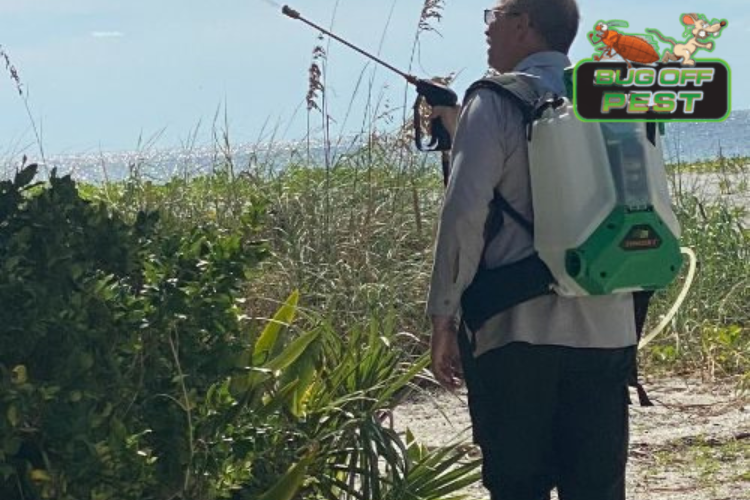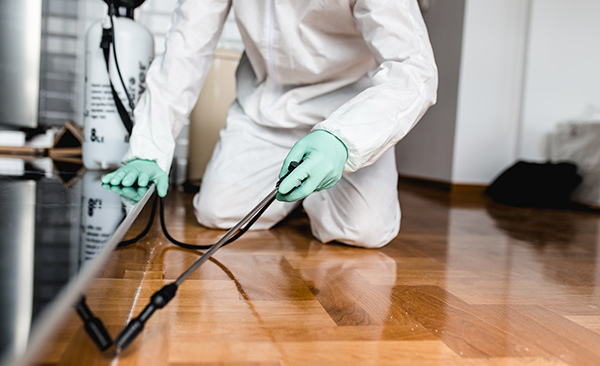Expert Mosquito Control Services for a Pleasant Outdoor Living Space
Learn More About the current Developments in Pest Control and Exactly How to Execute Efficient Therapy Solutions
In the last few years, the area of parasite control has actually observed substantial advancements, driven by the need for efficient and sustainable treatment solutions. Cutting-edge methods such as Integrated Insect Administration (IPM) combine environment-friendly experiment innovative modern technology, boosting both effectiveness and environmental obligation. The integration of clever modern technologies and DIY methods has actually encouraged people to deal with pest concerns a lot more efficiently. As we explore these growths, it ends up being necessary to comprehend how finest to carry out these techniques in various setups to achieve optimum results. The effects for parasite monitoring practices can be transformative.
Eco-Friendly Parasite Control Options
Over the last few years, the demand for green insect control choices has actually risen as house owners and services alike seek sustainable alternatives to standard chemical treatments. This shift is driven by growing environmental awareness and a desire to reduce the health and wellness dangers connected with synthetic pesticides.

Environment-friendly insect control methods incorporate a series of strategies that focus on the usage of natural materials and methods. Integrated Pest Monitoring (IPM) is one such method, combining organic, cultural, and mechanical methods to handle pest populaces while minimizing reliance on chemicals (Wildlife removal services). This all natural method stresses prevention through environment control and the introduction of all-natural predators, thereby fostering a well balanced community
An additional popular choice is using organic chemicals stemmed from plants, which often tend to be less hazardous to non-target microorganisms. Products like neem oil and diatomaceous earth have obtained traction for their efficiency in regulating insects while posturing minimal dangers to human wellness and the environment.
Furthermore, exemption strategies, such as sealing entrance factors and keeping cleanliness, play an essential duty in environmentally friendly bug management. By adopting these sustainable methods, people and businesses can properly manage parasites while promoting a healthier world for future generations.
Smart Innovation in Parasite Monitoring
Innovation is reshaping the landscape of insect administration, with wise innovation becoming an essential pressure in improving performance and performance - Wildlife removal services. The assimilation of Net of Things (IoT) gadgets, expert system (AI), and data analytics is transforming how pest control professionals approach infestations
Smart catches outfitted with sensing units can find parasite task in real-time, sending immediate alerts to drivers. This enables for prompt reactions, reducing damage and reducing the demand for substantial therapies. Furthermore, AI algorithms assess historic data to forecast bug habits, enabling proactive interventions based on environmental problems and infestation patterns.
Drones and computerized lorries are likewise playing a considerable role in pest monitoring, supplying aerial assessments of big areas, identifying hotspots, and also dispersing targeted treatments. These technologies not just improve procedures however also boost safety and security by limiting human direct exposure to potentially damaging chemicals.
Furthermore, mobile applications encourage consumers to monitor bug activity and accessibility expert suggestions, promoting a collaborative technique to pest management. Generally, the adoption of wise modern technology is establishing a new criterion in insect control, stressing data-driven decisions and sustainable methods that inevitably profit both experts and home owners alike.
Integrated Parasite Management Methods
Integrated Parasite Management (IPM) utilizes a holistic technique to pest control, incorporating various techniques to properly manage bug populaces while minimizing dangers to human health and wellness and the setting. IPM revolves around comprehending the pest life process, their all-natural adversaries, and the ecosystem in which they flourish.
One of the basic parts of IPM is checking pest populaces through regular evaluations and data collection. This enables the recognition of parasite limits, determining when intervention is necessary. Cultural methods, such as crop turning, habitat, and cleanliness manipulation, are important in decreasing insect prevalence and promoting plant health.
Mechanical controls, consisting of catches and obstacles, are additionally essential in IPM. These approaches can literally eliminate or prevent insects without using chemicals. When necessary, the judicious application of chemical controls is employed, concentrating on targeted therapies that lessen environmental impact.
Education and learning and cooperation amongst stakeholders, including farmers, pest control specialists, and the neighborhood, are vital for the successful execution of IPM approaches. By prioritizing sustainable methods, IPM not only addresses pest problems but likewise cultivates a much healthier ecosystem.
Biological Control Approaches
Many biological control approaches are progressively recognized for their efficiency in handling parasite populaces while promoting environmental equilibrium. These strategies harness all-natural predators, bloodsuckers, and pathogens to minimize pest numbers without depending on artificial chemicals. The intro of ladybugs can effectively manage aphid populaces, while nematodes target soil-dwelling insect larvae.
In addition, using microbial chemicals, such as Bacillus thuringiensis (Bt), provides an eco-friendly alternative for taking care of caterpillar pests. These items specifically target pest types, reducing damage to useful insects and pollinators. Moreover, preservation biological control highlights boosting environments for natural opponents, such as birds and beneficial bugs, consequently urging their presence in agricultural systems.
Research continues to expose ingenious strategies within this field, such as making use of pheromones to interrupt pest breeding patterns or the advancement of biocontrol agents with genetic modification. Carrying out these approaches can result in sustainable insect administration methods that alleviate the reliance on chemical interventions, eventually promoting healthier environments. As understanding of these methods expands, they are coming to be indispensable parts of incorporated bug administration (IPM) methods, using an equilibrium between effective pest control and environmental stewardship.
Do It Yourself Bug Control Solutions
As house owners look for efficient ways to tackle parasite issues, DIY insect control services have actually gained appeal for their ease of access and cost-effectiveness. These techniques encourage people to deal with invasions using readily offered materials and techniques, typically without the requirement for expert intervention.

In addition, preserving correct sanitation and normal examinations can protect against bug entrance and nesting (Wildlife Get the facts removal services). Straightforward techniques, such as securing cracks, removing food resources, and decluttering, can substantially decrease pest populations. Catches, both homemade and commercially available, can additionally provide effective remedies for surveillance and managing specific parasites like rodents or pests

Conclusion
The combination of eco-friendly bug control options, wise modern technology, and innovative monitoring strategies provides an extensive strategy to effective bug monitoring. By embracing Integrated Insect Monitoring (IPM) and using organic control methods, together with Do it yourself remedies, sustainable and accountable pest control can be achieved.
Environmentally friendly bug control approaches encompass a range of strategies that prioritize the usage of all-natural materials and techniques. Integrated Pest Management (IPM) is one such method, incorporating organic, social, and mechanical tactics to manage insect populations while decreasing reliance on chemicals. As understanding of these strategies expands, they are coming to be indispensable parts of incorporated parasite monitoring (IPM) strategies, offering a balance between effective insect control and environmental stewardship.
The integration of environmentally friendly parasite control alternatives, click here for more clever modern technology, and cutting-edge monitoring methods provides a detailed technique to efficient pest monitoring. By welcoming Integrated Parasite Monitoring (IPM) and using organic control methods, along with Do it yourself options, liable and lasting bug control can be achieved.